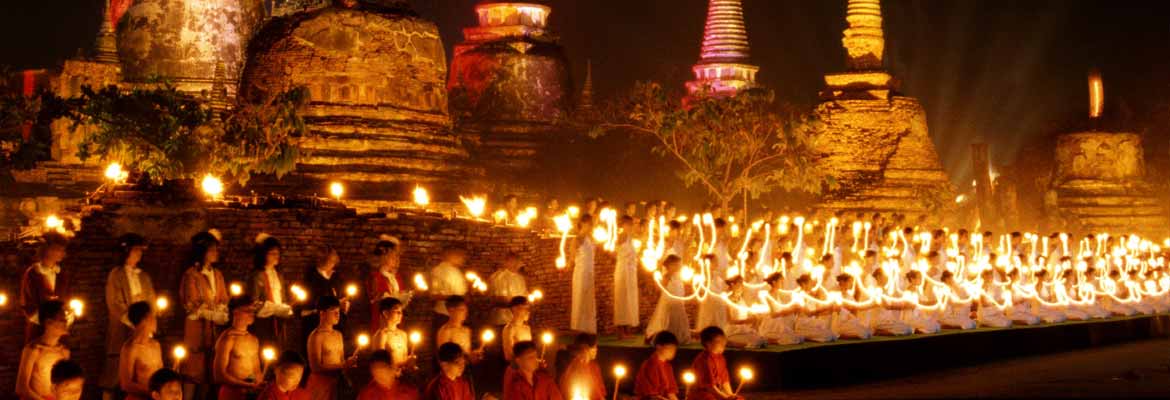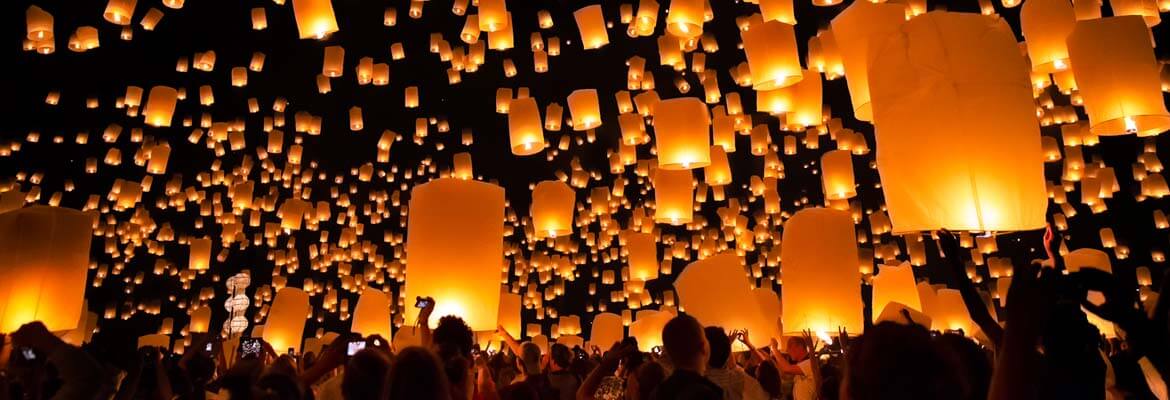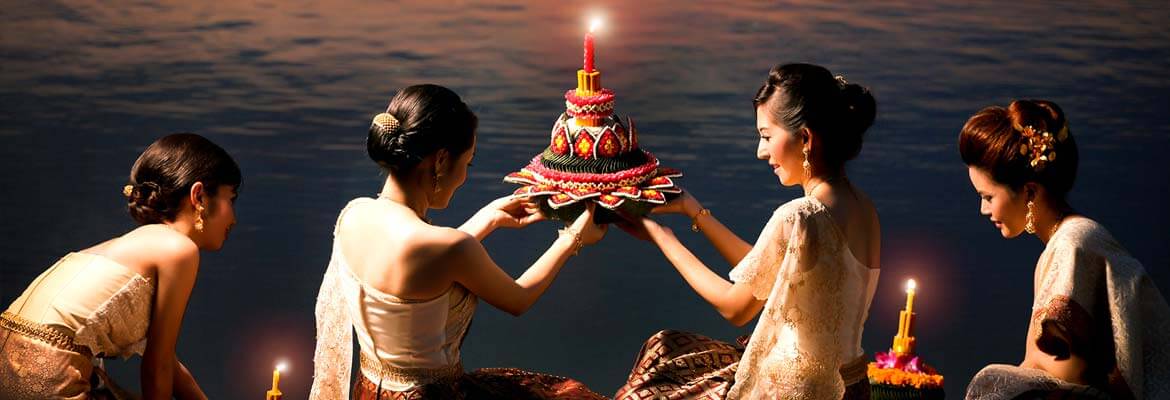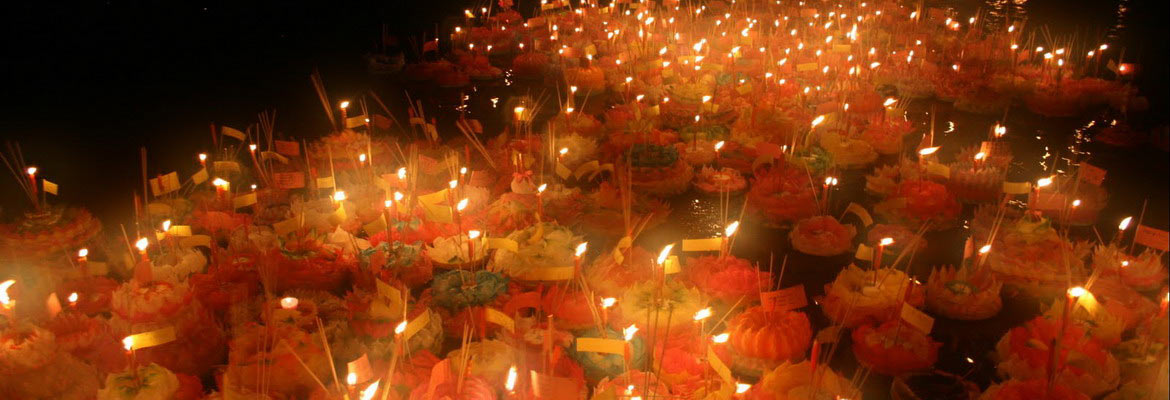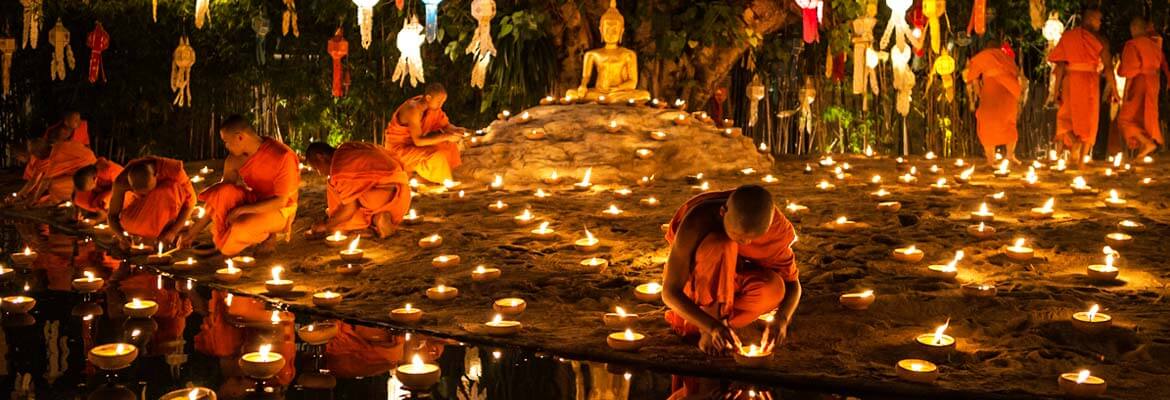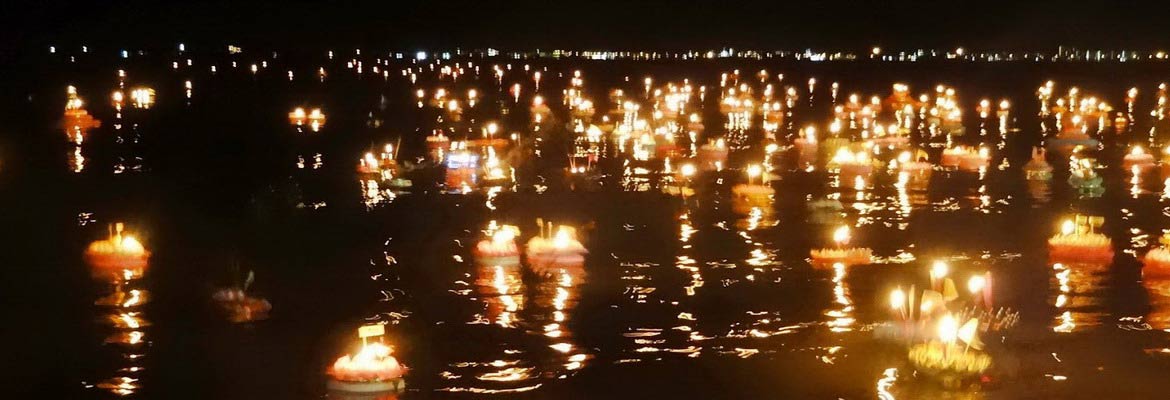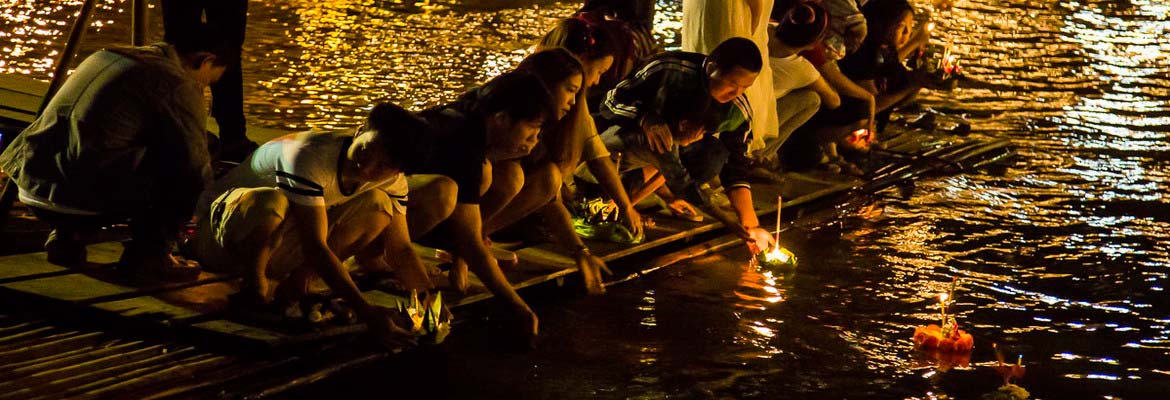 Loy Krathong
Loy Krathong
Even though it isn't a national holiday, Loy Krathong is probably Thailand’s most interesting and fascinating festival. Also known as the "Festival of Lights" and celebrated nationwide, this popular festival symbolizes the close ties between the Thai culture and water. Loy Krathong is also celebrated in other Asian countries, though under different names, including Myanmar as the "Tazaungdaing festival", Sri Lanka as "Il Full Moon Poya" and Cambodia as "Bon Om Touk". The dates of the festival always cause plenty of confusion, as the exact dates change every year. Loy Krathong Festival is held on the evening of the full moon of the 12th month in the traditional Thai lunar calendar, which usually falls in the month of November when the water level is high and the climate is pleasantly cool. However, the religious ceremonies and events are held over a period of some days, normally a day before and a day after the date of the full moon. In 2023, Loy Krathong falls on Tuesday 28th of November , but the but celebrations begin on Monday 27th November and end on Wednesday 29th November, while in 2024 it will be held Saturday, the 16th of November.
The name of festival comes from the Thai word "loy" meaning to float, while "krathong" is a small decorative basket or raft made from natural materials which is then floated on a river. Each year, the festival features several ceremonies and activities such boat races on the rivers, beauty contests, Krathong processions and parades. However, the festival's highlight is made by the lights from hundreds of candles that twinkle on the water. Each one carries prayers and wishes sent off to float down rivers and streams. The traditional krathong used for floating at the festival is made from a cross-section of a banana tree trunk, which is then elaborately decorated with banana leaves and flowers in intricate towering designs. Nowadays, krathongs are also made of bread or Styrofoam. While Styrofoam is not biodegradable and for this reason is sometimes banned, a bread krathong will disintegrate after a few days and can be eaten by fish. The krathongs usually contain a candle, incense and some coins. The person who will be floating the krathong often adds a small cutout of his hair or fingernail. On the night of the full moon, Thais launch their krathongs on a river, canal or a pond, lighting the candle and making a wish before they are put into the water. It is believed that the krathong carries away bad luck, anger and grudges and signals a new start that will bring good luck and happiness. Since the Loy Krathong coincides with the Lanna festival known as Yi Peng, during the festival period thousands of "Khom Loi", which literally means floating lantern, are launched into the sky in the full moon night. The act of releasing the floating lanterns is a way to pay respect Buddha and also to release bad memories and misfortunes of the previous year. Buddhists also believe that if you make a wish when you release a khom loi, it will come true. A traditional khom loy consists of a thin fabric, such as rice paper or mulberry paper, stretched over a bamboo or wire frame to which a candle or a fuel cell is attached. When the candle is lit, the resulting hot air is trapped inside khom loy and creates enough lift for the lantern to float up into the sky.
The history of Loy Krathong Festival - The precise origin of Loy Krathong Festival is rather obscure, but it is widely believed to have begun in the ancient capital Sukhothai during the 13th or 14th century. According to legend, a consort of King Sri Indraditya named Nang Nopphamat was the first to float a decorative basket with candle. Following this legend, the beauty contests accompanying the festival are known as "Nopphamat Queen Contests". However, there is no historical evidence that a Nang Nopphamat ever existed. Instead, it is a matter of fact that a woman of this name was the leading character of a novel written in the early Bangkok period. According to a text written during the reign of Rama IV, it was a Brahmanical festival that was adapted by Buddhists in Thailand to honor the Lord Buddha, Prince Siddhartha Gautama. The candles venerate the Buddha with light, while the krathong's floating symbolizes letting go of all one's hatred, anger, and defilements. Coming at the end of the rainy season, many Thais believe that the tradition of krathongs pays homage to the Goddess of Water, the Hindu Goddess Ganga, Phra Mae Khongkha.
Where to See Loy Krathong - The festival is celebrated throughout Thailand and wherever you are, there is almost certain to be a Krathong celebration somewhere close at hand. Loy Krathong is particularly famous in Sukhothai, Ayutthaya, Chiang Mai, Bangkok and Tak. Old Sukhothai hosts one of Krathong's most beautiful festivals. The celebrations last two week, with the ancient ruins illuminated and the ponds lit up by candles. Parades, firework displays and concerts attract a large number of Thai and foreign tourists. In Chiang Mai, the main focus is on the Ping River and the moat that surrounds the old town. In addition to the floating krathong, khom loy and khom fai fire lanterns are released into the sky, because in Chiang Mai and other areas of northern Thailand, the popular Yee Peng Festival is also celebrated at the same time as Loy Krathong. In Bangkok, the Chao Phraya River is the main focus for celebrations with bridges and buildings decked out in bright lights for the occasion. Places such as Lumpini Park with its lake also draw a large crowd. In the seaside resorts and islands of Thailand, tourists and locals usually gather on the beaches to float their krathong onto sea, unless there are lakes or lagoons in the vicinity like Samui, Chaweng Lake, or Phuket, Karon Lake and Bang Tao Lagoon.





